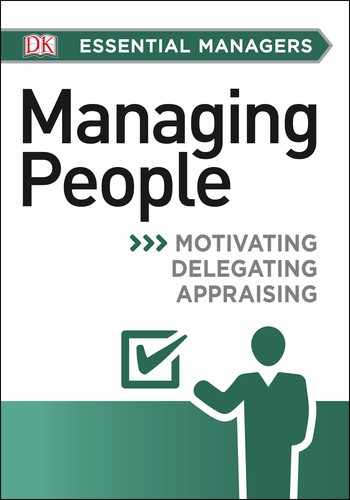
26 / INTERACTING WITH OTHERS
Communicating effectively
Getting your message across
Communication is the process of sending
a message to another person with the
intent of evoking an outcome or a change
in behavior. It is more efficient when it
uses less time and fewer resources;
it is effective when the information is
conveyed exactly as you intend. Good
The components of the communication
process are the sender, the receiver,
the message, and the channel. First, the
message is encoded into a format that
will get the idea across. Then it is
transmitted through the most appropriate
channel. This is chosen on the basis
of efficiency and effectiveness, as
well as practical factors, such as the
need to produce a stable record of
the communication; whether the
information needs to be kept confidential;
speed and cost; and the complexity of
the communication.
Channels can be oral (speeches,
meetings, phone calls, presentations,
or informal discussions); written (letters,
memoranda, reports, or manuals);
electronic (emails, text messages,
It is easy to see investment in communication as a luxury, especially
in times of economic adversity. However, good communication is a
proven tool for improving commitment in those you are managing,
and so for boosting revenue and product quality.
communication means balancing the two:
for example, explaining a new procedure
to each staff member individually may
be less efficient than calling a meeting
where everyone can hear about it.
However, if staff members have very
disparate sets of interests, one-on-one
coaching may be more effective.
Delivering messages
Before you send a message,
ask yourself how much you
understand about it, and
what is the level of the
recipient’s understanding

COMMUNICATING EFFECTIVELY / 27
REDUCE “NOISE”
Noise is anything that
interferes, at any stage, with
the communication process.
The ultimate success of the
communication process
depends to a large degree
on overcoming noise, so
make an effort to keep your
messages clear, concise,
and to the point.
CASE STUDY
TOM’S OF MAINE
Tom Chappell is the founder of
Tom’s of Maine, a successful natural
toothpaste and health company in
the US. Chappell is a strong believer
in using face-to-face communication
to deal with rumors, morale
issues, and other communication
problems. Every month, he meets
informally with his employees
and talks about the company’s
performance and future plans,
and solicits feedback from every
member of his staff. He says that
the best way to deal with employee
communication is to be honest and
forthright, share information,
and “tell it like it is.”
podcasts, video conferences, websites,
or webcasts); or nonverbal (touch,
facial expression, or intonation).
Finally, the message must be
successfully decoded by the receiver.
Many factors may intrude, preventing
the receiver from correctly understanding
what they are told. These range
from semantics or different word
interpretations to different frames
of reference, cultural attitudes,
and mistrust.
Before you send a message, ask
yourself how much you understand
about it, and what is the level of the
recipient’s understanding? Will
the recipient understand the language
and jargon you use, and do they have
technology that is compatible with yours?
Tip
Communication can only be considered truly effective
when the information is conveyed exactly as you intend
..................Content has been hidden....................
You can't read the all page of ebook, please click here login for view all page.
